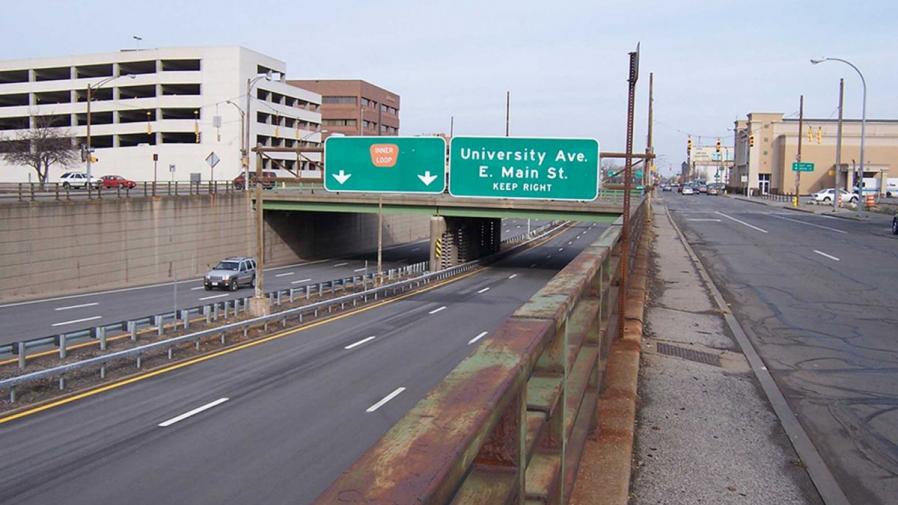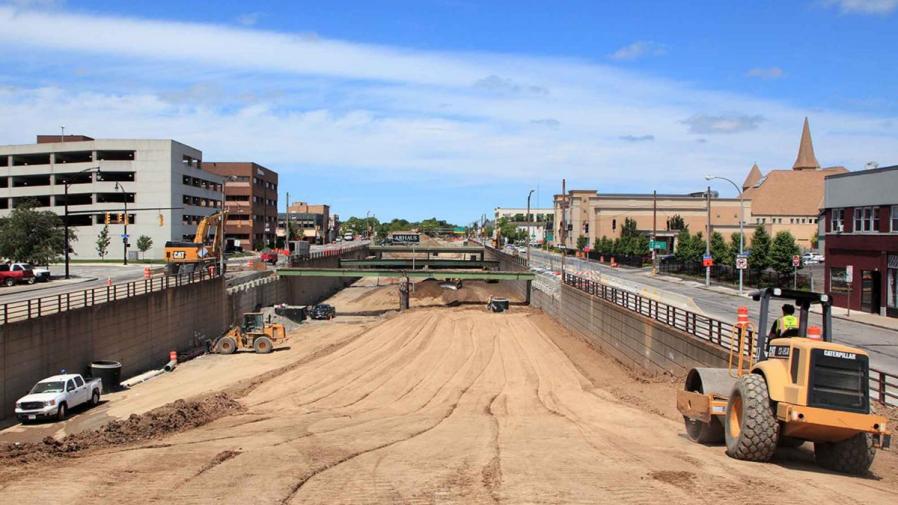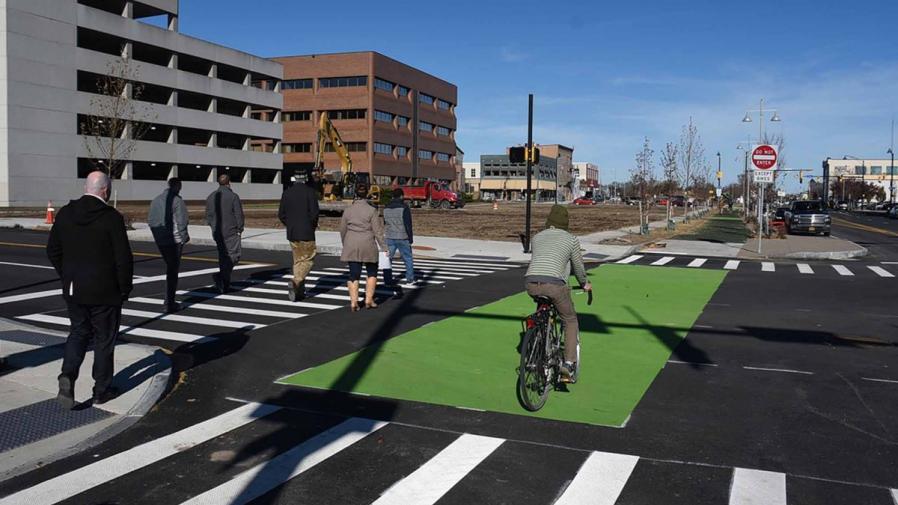


The Rochester Inner Loop project is one of five examples highlighted in a national publication, Community Impact Assessment: A Quick Reference for Transportation- 2018 Update. The updated document, published in June 2018, was prepared by Federal Highway Administration’s Office of Planning, Environment, & Realty.
The reference guide defines Community Impact Assessment (CIA,) outlines the community impact assessment process, and identifies tools and information sources. The intent of this update is to ensure that the document reflects current laws and regulations, incorporates technological advancements like the use of social media and enhanced modeling and visualization capabilities, and discusses expanded techniques available to transportation practitioners, including the use of online data sources like EJ Screen and analytical tools.
This process can help increase understanding of context, identify safety needs, and accelerate project delivery by incorporating community considerations early in the decision-making process. CIA also helps to improve analysis and documentation for NEPA, Civil Rights, and environmental justice.
A recorded webinar about this topic is available online for reference. The presenters discuss the background and purpose of the reference guide update, including new resources developed since the 1996 publication; provide an overview of the CIA process; and discuss new socioeconomic data sets, robust analysis tools, and innovative public involvement approaches.
Five new project examples have also been posted that demonstrate current CIA techniques and approaches. Project managers described each of the best practices in five states during a recorded webinar in June 2018, which is available to view online.
Erik Frisch, Transportation Specialist with the City of Rochester talked about Reconstructing the Inner Loop East - Rochester, New York. He gave an overview of the project history, scope, project process, and the public engagement techniques. Learn more about the City of Rochester’s work on the Inner Loop Project Website.
Other projects noted as best practices include:
- Congestion Reduction Demonstration ExpressLanes Program - Los Angeles, California- Stephanie Blanco, Los Angeles Metro
- Business 40 Improvements - Winston-Salem, North Carolina, Pat Ivey and Jamille Robbins, North Carolina Department of Transportation
- Cramer Hill Access Improvements/Truck Management Study - Camden, New Jersey - Anthony Davis, New Jersey Department of Transportation
- I-70/I-71 Columbus Crossroads - Columbus, Ohio, Leslie Montgomery and Chris Hermann, Ohio Department of Transportation
For more information about GTC’s involvement in the Inner Loop project, contact GTC Executive Director, Jim Stack at (585) 232-6240 or jstack@gtcmpo.org.
For more information about the Community Assessment Guide produced by FHWA, contact Gary Jensen.
September 18, 2018